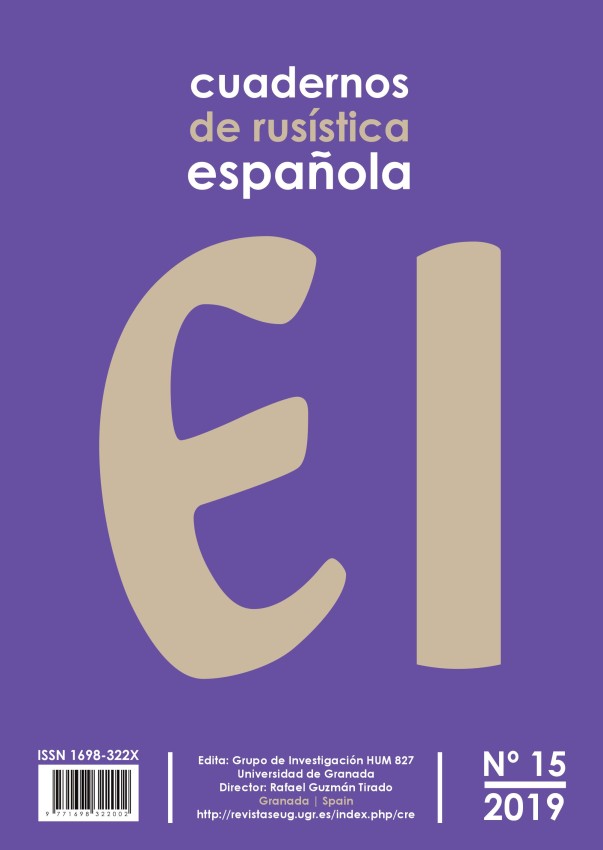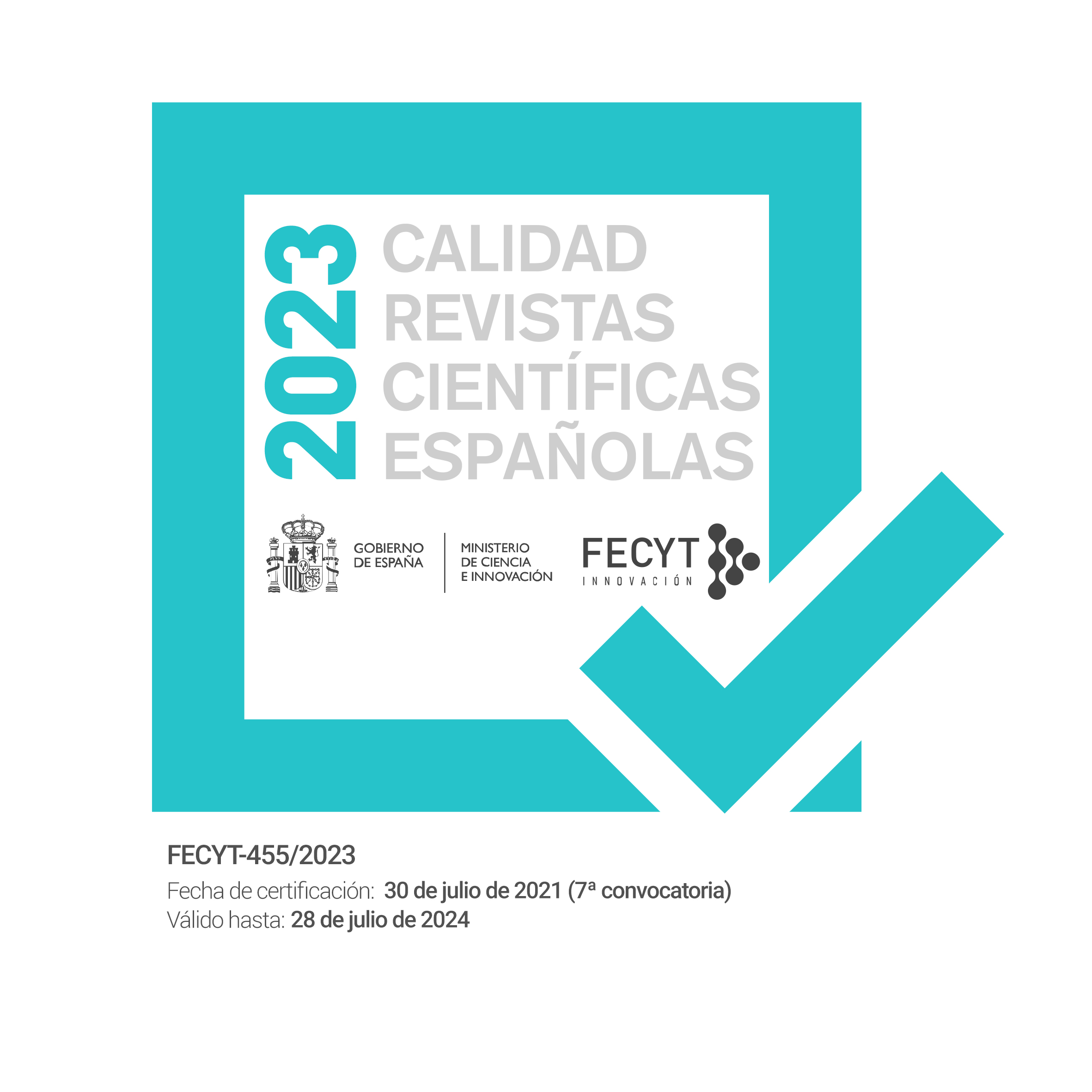Российские лингвисты: наукометрическое ранжирование
DOI:
https://doi.org/10.30827/cre.v15i0.9755Palabras clave:
наукометрия, российские лингвисты, цитируемость, индекс Хирша, РИНЦ, индекс самоцитированияResumen
В статье представлен наукометрический анализ публикаций широко известных российских языковедов. Проведено ранжирование по количеству публикаций, количеству цитирований и индексу Хирша на основе данных Российского индекса научного цитирования. Выделены факторы, способствующие активной цитируемости и росту индекса Хирша: принадлежность к активно развивающимся научным направлениям, работа в ведущих университетах и академических научных институтах, высокий авторитет соответствующих журналов и издательств, публикация учебников, монографий и обзорных статей. Для определения роли самоцитирования в наукометрических показателях ученого предложено использовать S-индекс (S-index), который вычисляется по формуле S-индекс = h-индекс / h-индекс без самоцитирования. Сделан вывод о том, что наукометрический анализ может служить одним из объективных инструментов для оценки научной деятельности. Вместе с тем методы наукометрии нужно совершенствовать, в том числе на основе сопоставления рейтингов национальных баз данных с материалами, полученными из глобальных наукометрических источников (Scopus, Web of Science и др.). Перспективное направление прикладной наукометрии – использование экспертных оценок, сделанных квалифицированными специалистами в соответствующей области знаний и расширение параметров оценки.
Descargas
Citas
AKSNES, D. W., SCHNEIDER, J. W., GUNNARSSON, M. (2012): “Ranking national research systems by citation indicators: A comparative analysis using whole and fractionalised counting methods”, Journal of Informetrics, 6, pp. 36–43.
BAR-ILAN, J. (2008): “Which h-index? — A comparison of WoS, Scopus and Google Scholar”, Scientometrics, 74 (2), pp. 257–271.
BEREZOVICH, E. L. (2019): “Prikladnaya naukometriya”, Antropologicheskij forum, 40, pp. 11–84.
BORNMANN, L., DANIEL, H. D. (2007): “What do we know about the h-index?” Journal of the American Society for Information Science and Technology, 58 (9), pp. 1381–1385.
BRAUN, T., GLÄNZEL, W., SCHUBERT, A. (2006): “A Hirsch-type index for journals”, Scientometrics, 69 (1), pp. 169–173.
CRONIN, B., MEHO, L. (2006): “Using the h-index to rank influential information scientists”, Journal of the American Society for Information Science and Technology, 57 (9), pp. 1275–1278.
CSAJBÓK, E., BERHIDI, A., VASAS, L., SCHUBERT, A. (2007): “Hirsch-index for countries based on Essential Science Indicators data”, Scientometrics, 73 (1), pp. 91–117.
EGGHE, L. (2006): “Theory and practise of the g-index”, Scientometrics, 69 (9), pp. 131–152.
EGGHE, L., ROUSSEA, R. (2019): “A geometric relation between the h-index and the Lorenz curve”, Scientometrics, 119(2), pp. 1281–1284.
FOLEYA, A. J., SALAAB, S. D. (2010): “The impact of self-citation”, Cortex, 46 (6), pp. 802–810.
GINGRAS, Y., KHELFAOUI, M. (2018): “Assessing the effect of the United States’ “citation advantage” on other countries’ scientific impact as measured in the Web of Science (WoS) database”, Scientometrics, 114 (2), pp. 517–532.
GLÄNZEL, W. (2006): “On the opportunities and limitations of the h-index”, Science Focus, 1 (1), pp. 10–11.
HIRSCH, J. E. (2005): “An index to quantify an individual’s scientific research output”, Proceedings of the National Academy of Sciences of the United States of America, 102(46), pp. 16569–16572.
KELLY, C. D., JENNIONS, M. D. (2006): “The h-index and career assessment by numbers”, Trends in Ecology & Evolution, 21 (4), pp. 167–170.
KOSMULSKI, M. (2006): “I—a bibliometric index”, Forum Akademickie, 11, p. 31.
MIHAJLOV, O. V. (2017): Citirovanie i citiruemost' v nauke: obshchie principy citirovaniya, sovremennye kolichestvennye pokazateli citiruemosti, citiruemost' i kachestvo nauchnoj deyatel'nosti issledovatelya. LENAND. Moskva.
PRATHAP, G. (2006): “Hirsch-type indices for ranking institutions' scientific research output”, Current Science, 91 (11), pp. 1439.
PRAUS, P. (2019): “High-ranked citations percentage as an indicator of publications quality”, Scientometrics, 120(1), pp. 319–329.
SCARPA, F., BIANCO, V., TAGLIAFICO, L. A. (2018): “The impact of the national assessment exercises on self-citation rate and publication venue: an empirical investigation on the engineering academic sector in Italy”, Scientometrics, 117 (2), pp. 997–1022.
SCHUBERT, A. (2007): “Successive h-indices”, Scientometrics, 70 (1), pp. 183–200.
SCHUBERT, A., GLÄNZEL, W. (2007): “A systematic analysis of Hirsch-type indices for journals”, Journal of Informetrics, 1 (3), pp. 179–184.
STERNIN, I. A. (2019): Pis'mo professora VGU Iosifa Sternina ob izmeneniyah v upravlenii naukoj i obrazovaniem v Rossii. https://philologist.livejournal.com/10921642.html
TEIXEIRA DA SILVA, J. A. (2018): “The Google Scholar h-index: useful but burdensome metric”, Scientometrics, 117(1), pp. 631–635.
VAN RAAN, A. F. J. (2006): “Comparison of the Hirsch-index with standard bibliometric indicators and with peer judgment for 147 chemistry research groups”, Scientometrics, 67 (3), pp. 491–502.
VAN RAAN, A. F. J. (2008): “Self-citation as an impact-reinforcing mechanism in the science system”, Journal of the American Society for Information Science and Technology, 59(10), pp. 1631–1643.
ZHENGRA, I. (2018): Oshibki v ocenke nauki, ili Kak pravil'no ispol'zovat' bibliometriyu. Novoe literaturnoe obozrenie. Moskva.












